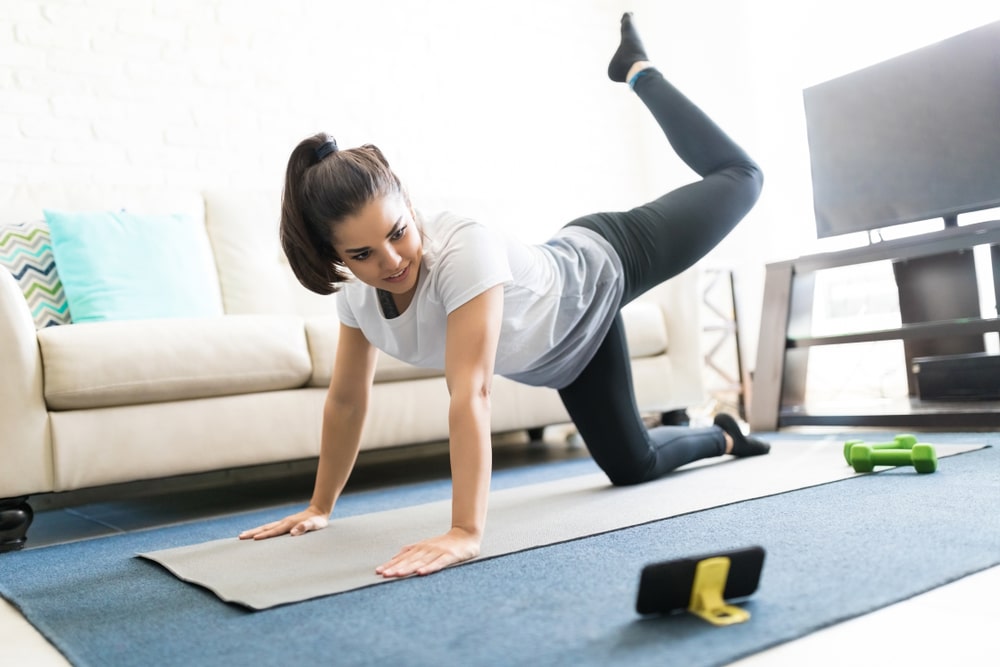
What to Know Before Starting a New Exercise Routine
It’s January again. Cue the spike in gym memberships and resolutions to shed those extra pounds and get strong. Getting physically fit is an important goal. But oftentimes exercise can seem too overwhelming to stick with. This year, ease back into exercise the right way with our helpful tips. You’ll stay motivated and committed to working out long after winter is over! Here’s what to know before starting a new exercise routine.
Why Should You Exercise?
Exercise is a crucial part of health and well-being. Our bodies are designed to move.
For millennia, humans did little else besides exercise. We spent our days working intense physical labor and traveling miles on foot. We moved constantly without even thinking about it.
It is only in the last 100 years, thanks to rapid technological advancements, that we’ve shifted to a culture of inactivity. The average American now sits for around 21 hours a day. This “sitting disease” has been linked to many serious health issues for millions of people.
The good news is that these health problems are entirely preventable. Even simple activities like standing more and taking short walks can improve your metabolic rate and general health.
Regular exercise has also been proven to:
- Reduce the risk of heart attack, cancer & stroke
- Support bone health
- Enhance brain power
- Increase energy & productivity
- Improve mood & emotional state
- Tone & strengthen muscles
- Straighten posture
- Reduce pain & mobility issues
Exercise is essential to your longevity and quality of life. However, the one thing exercise will not do – at least on its own – is make you lose weight.
Most of us have been conditioned to believe that exercising is the key to weight loss – or more specifically, fat loss. But scientific studies have concluded that exercise alone is not an effective way to drop pounds.
Weight loss comes down to what you eat and how much. You’ve probably heard that you can’t “out-exercise” a bad diet, and that is true.
When you start to exercise regularly, though, something amazing happens. You feel better, happier and stronger. As a result, many people begin to naturally gravitate toward healthy, nutritious foods that will support their active lifestyles. It’s a win-win!
How to Ease into an Exercise Routine
You know exercise is great for you. So, how do you get ease back into physical activity after a long hiatus or if you’re a beginner?
First, if you’re returning to an exercise routine after an injury or serious illness, be sure to consult your doctor before starting any physical routine. Your physician can advise you on the right regimen for your unique circumstances.
Exercise newbies and those returning from a break can feel confident about properly beginning a new exercise routine by doing the following:
- Determine your goals: If you wanted to take a road trip somewhere you’d never been before, you wouldn’t just jump in your car and start driving without a GPS. Exercise is also a journey – to better health and movement. Define the endpoint on your fitness roadmap before you begin. Do you want to get stronger? Reduce body fat? Or maybe train for your very first marathon next year? Having a clear goal in mind will help you define a path to get there, as well as stay motivated.
- How much and how often: The U.S. Department of Health and Human Services recommends that healthy adults get 150 minutes of moderate activity per week for optimal health. That works out to about 30 minutes a day, 5 times a week. But when you’re easing into exercise, aim for 15-20 minutes a day, 3-4 times a week of light activity for the first few weeks. If you push yourself too hard, too soon, you’ll quit.
- Just use bodyweight: Don’t worry about lifting anything – yet. An excellent way to get into strength training is through simple bodyweight activities. Moves like squats, lunges, push-ups, tricep dips and crunches are incredibly beneficial and build strength without using equipment at all.
- Monitor your intake: As mentioned above, exercise does not contribute to significant weight loss. Your intake of food and beverages does. Keep track of what you eat and drink each day in a food journal. This will help you decide where you may like to make improvements as you continue on your health and fitness journey.
- Be patient and listen to your body: You’re working hard, and you want to see results. It can be very tempting after a couple weeks of getting back into exercise to push ahead and try to do more than you’re actually ready for. Remember that progress from exercise is often slow. But it is steady. Be patient and consistent, and the results will come.
How to Avoid Injury
Some ways to avoid injury during your exercise routing are obvious. You wouldn’t try to bench press 300 pounds or do an hour of high-intensity Crossfit on your first go ‘round.
But there are other less obvious ways that injury from exercise can occur. Here are some things you can do to minimize the risk of hurting yourself while working out:
- Start with a trainer or coach: If you’re truly a beginner, or have been out of the exercise loop for years, make an appointment with a personal trainer or fitness coach. These professionals can help you get on track, assess your fitness goals and get you started on an appropriate routine.
- Focus on form, not weight: When lifting weights or using exercise machines, always lower your weight the minute your form begins to suffer. Lifting with clean form is far more important than the amount of weight you are lifting.
- Modify exercises whenever you need to: You want exercise to be challenging, but not painful. Modify all exercises to honor your body’s current abilities. Do an assisted lunge (holding onto something) instead of a regular one, or do push-ups off of your knees instead of toes.
- Walk, don’t run: This little reminder from elementary school is applicable to your fitness routine too. To avoid injury when you’re just beginning a cardio routine, opt for brisk walking over jogging or running. Those activities are hard on your joints and can increase your chances of getting hurt.
- Always warm up and cool down: Make this part of your exercise routine. Do at least five minutes of warming up and five minutes of cooling down every time you work out. Proper stretching before and after exercise greatly reduces the chance of pulled or strained muscles. Plus, flexibility is a huge part of good fitness!
- Use resistance bands: Resistance bands are a wonderful alternative to traditional dumbbells. They come in many different levels of resistance, giving you all the benefits of strength training without the bulkiness and potential injury associated with weights.
- Enjoy whatever you choose to do: If you hate the exercise you’re doing, you’re bound to rush through it to just get it over with. This increases the odds you’ll get hurt or quit working out entirely. Don’t worry about doing the type of exercise that burns the most calories. Just choose an activity you actually enjoy, do it consistently and you will reap the benefits.
Are you Sore or Should you See the Doctor?
Most of us have been there. Hobbling down the stairs with our glutes and thighs screaming at us a day or two after working out.
You can thank DOMS (delayed onset muscle soreness) for those sore, stiff muscles that start to ache about 24 hours after a workout and can last a few days. When your body is new to an exercise routine, you may be a victim of DOMS for a couple weeks.
Although the soreness is no fun, DOMS is a normal part of a new exercise routine. It usually goes away in on its own and is nothing to worry about.
However, acute pain during or after a workout is not normal. If you’re experiencing any of these issues, you’ll want to make an appointment with your doctor right away:
- Sharp, shooting localized pain or swelling
- Persistent, dull ache in bones
- Grinding or painful popping in joints
- Stiffness that does not go away despite stretching, icing or heat
- Shortness of breath or chest discomfort hours after exercising
- Recurring or worsening muscle spasms
- Severe headache or blurry vision
- Tingling & numbness in the extremities
- Excessive weakness & fatigue

Join our Senior Wellness Society for the latest news on Medicare and tips for healthy living in San Diego!
Sign up now ›Are you looking for specialized medical care in San Diego?
Our directory has more than 850 doctors in San Diego County of various specialties who are available to help you.
Find a doctor